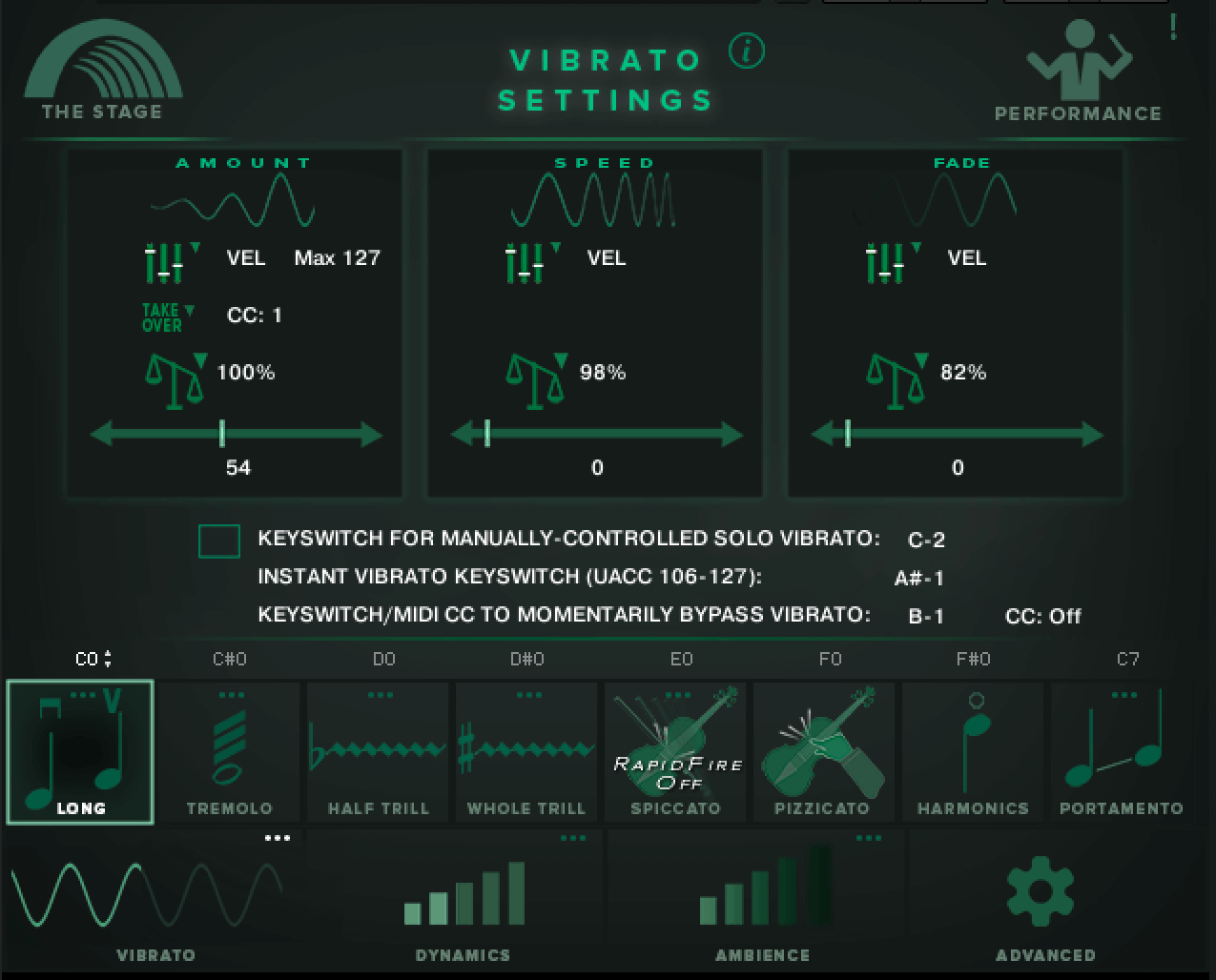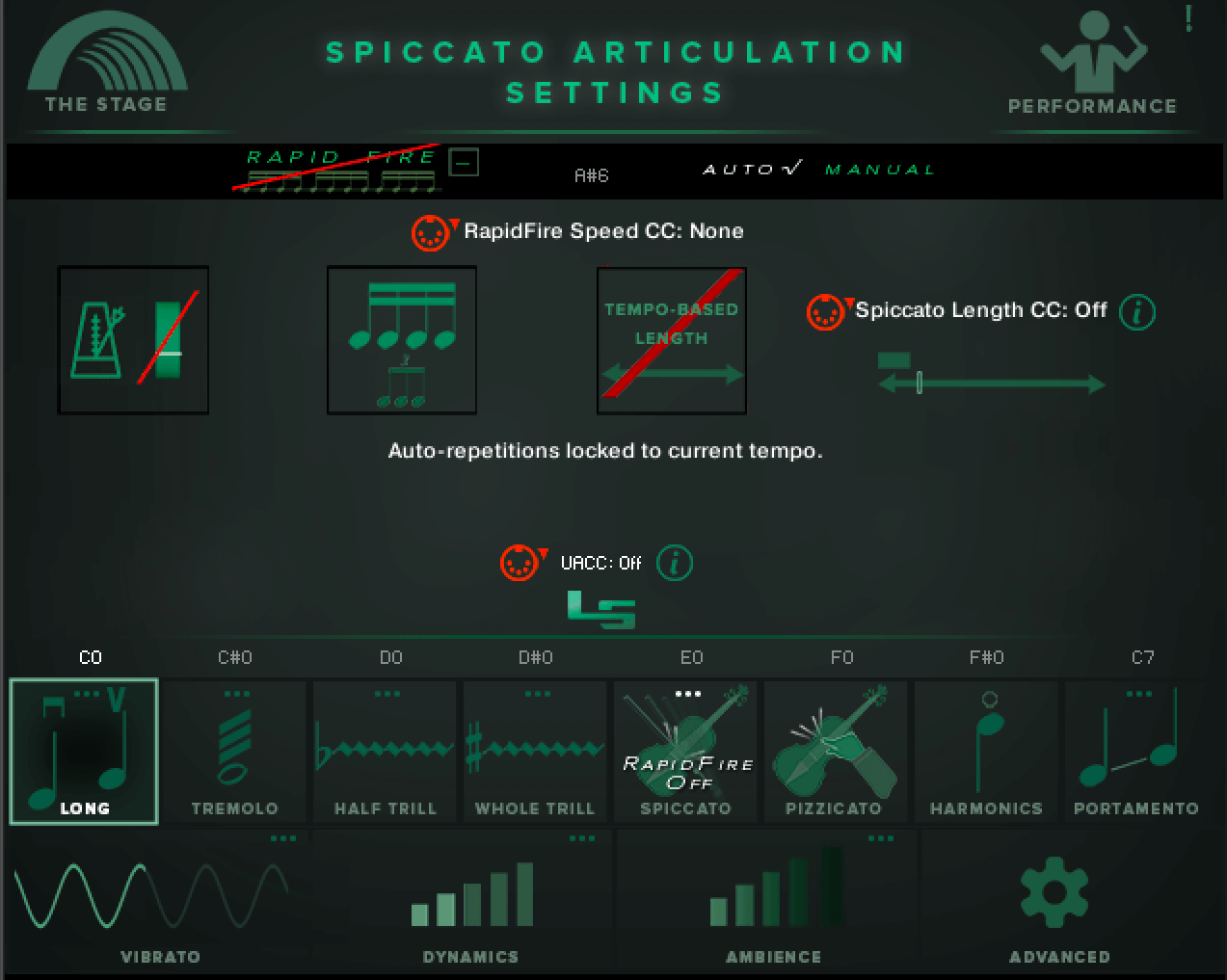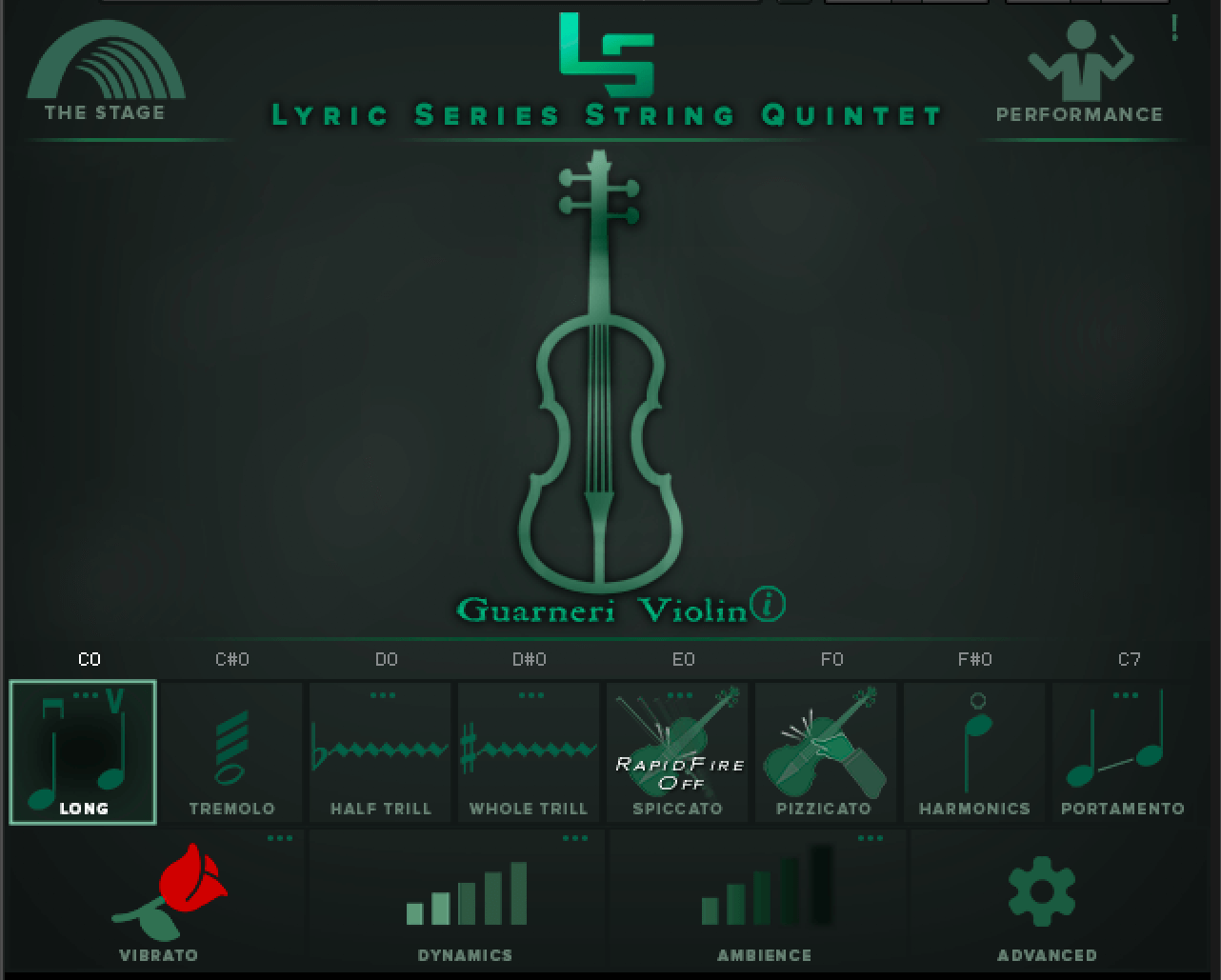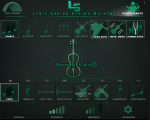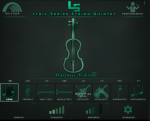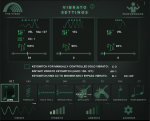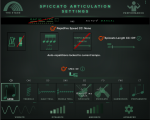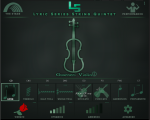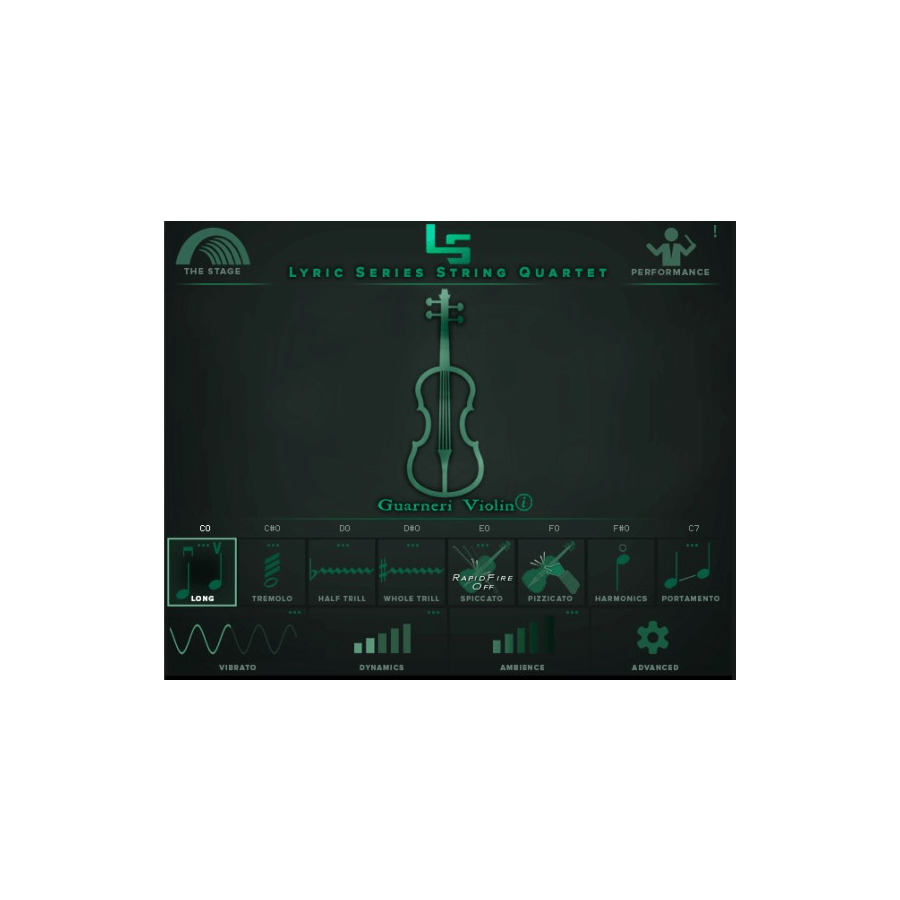
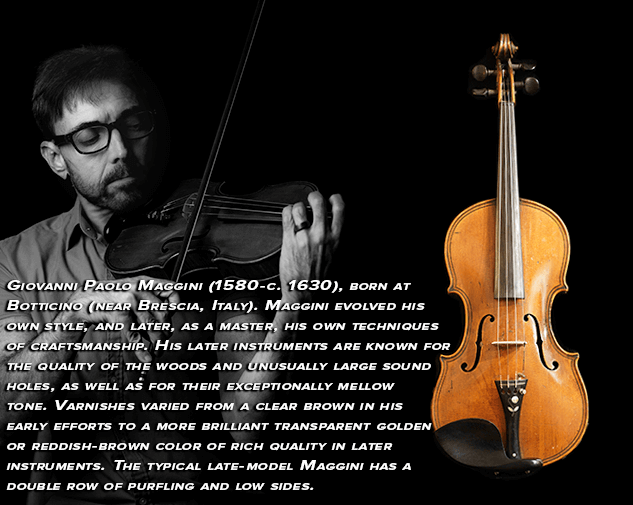
CREATE MUSICAL MELODIES OUT OF THE BOX
The main focus of the Lyric Series String Quintet is to provide musical, melody lines right out of the box. Further, it is our goal to shorten your workflow time as much as possible. It's not a "do everything" library, but we feel that the attention to being able to create melodic lines makes this product a very valuable asset.
While there are plenty of good-sounding solo string libraries out there, I found it interesting that for me, a professional string player, it took a lot of "fiddling" with the instrument to get really musical phrases and melody lines. It was easy to get nice "pads" and "fillers" for sure, but I really wanted a believable single, melody line. Nothing out there, not even my older libraries, seemed to capture that certain essence you hear when listening to a professional player unless you took a lot of time to tweak whatever you were working on. And live-playing? No way. Not "out of the box" anyway.
INTUITIVE, STRING-ORIENTED LEGATO TRANSITIONS
Legato Discussion - Valiant efforts have indeed been made over the years using all kinds of "legato" and "interval" tricks and whatnot. Some are very nice, but still fall short. Others do capture the right "sound", but the resulting performance always, at least to me, sounds "clunky", "bumpy" or only sounds good when played at certain tempos.
So in analyzing what string players do, it seems that a myriad variables came to play...so to speak. Bowing, slurring, vibrato (amount, speed and fade-in time), string crossing, left-hand-shifting, and more. With so many of these variables, it is hard to recognize a pattern so as to emulate this in a digital instrument. In fact, at this point in time, it's impossible. However, certain occurrences take place often enough to tell the listener, "yes, I hear this as a professional stringed instrument performance.", that one could, in essence, focus on those, and implement them judiciously. It's like putting in a few "aha" features that make for realism.
So how has this been emulated so far? The best of them go to great lengths in using "legato" technology. That's great, except that with string players, it's never the same. Sometimes, there's a string crossing, sometimes a hand shift, sometimes a bow change.. and on and on. The easy ones to mimmic are the "slurred" or "fingered" transitions. That's because the player does not "bow" the interval, and does not shift the left hand during small intervals. So the "legato" transition is easy to capture. The trouble begins during the many transitions that happen during separate bowing or when a player shifts the left hand.
While there is no easy way to capture all of these details, the one thing that seems to be loudly apparent is the sound that happens when string players play larger intervals on the same string. (Especially cellos) It's not really a true portamento and does not always happen. It seems to occur most when the players need to move their left hand up or down from it's current position to achieve the note. We have calculated certain probabilities of this happening during certain types of playing styles, and have successfully, to a point, implemented them into the instruments of the Lyric Series String Quintet. And it's all very dynamic depending on the way you play.
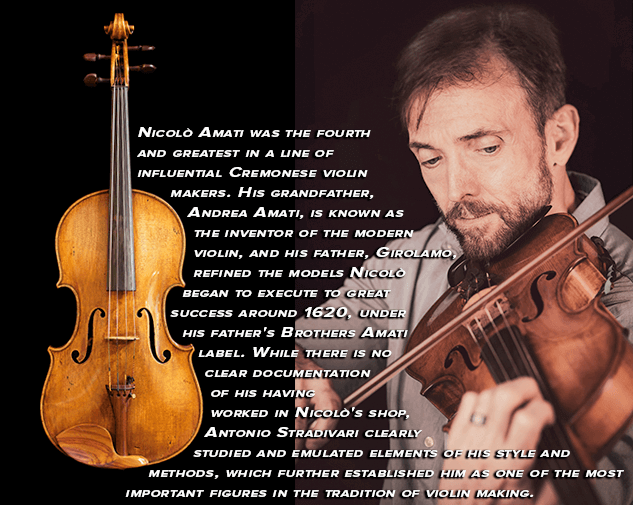
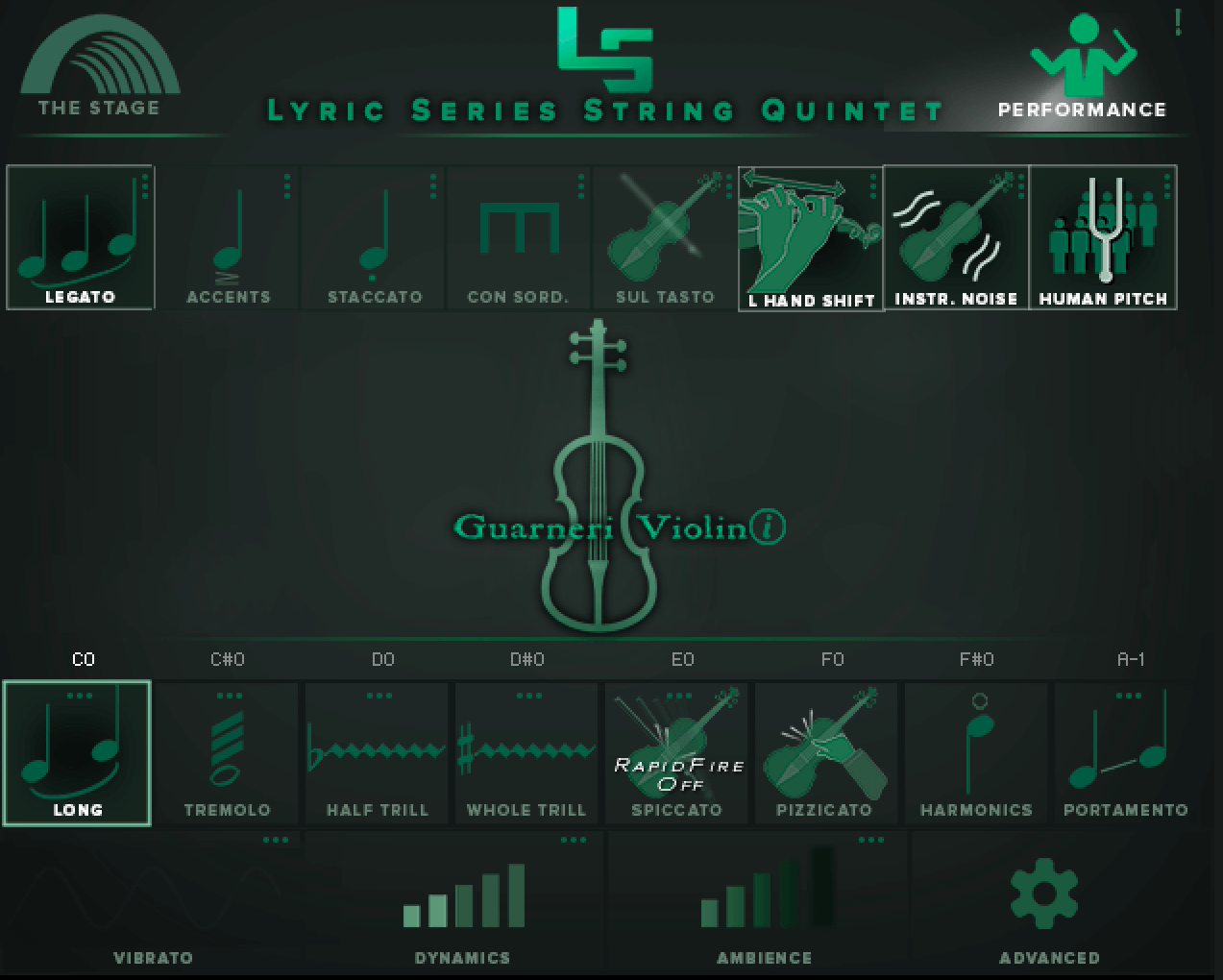
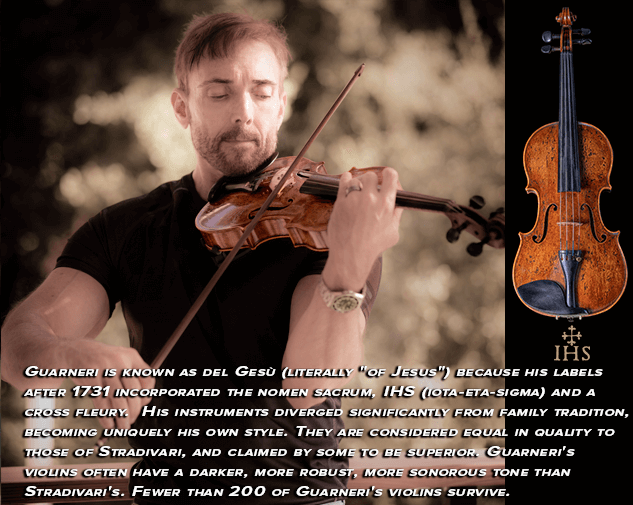
UNRIVALED VIBRATO CONTROL
And then, there's the issue of vibrato. I know of no professional string player who uses the same vibrato amount, speed or fade-in time statically. In trying to capture vibrato, most of the time, (if handled at all) it is by means of assigning vibrato to a controller. Usually, this is just the amount of vibrato and nothing else. That can become clunky due to having to ride the controller back and forth without affecting incoming or outgoing notes, which can be quite difficult to do, and rarely comes off as very natural. Another way of handling this issue has been to have the samples be "baked in" with the performer's own vibrato. If you happen to love that particular performer's style, then you're set. If not, you have no options. Sometimes, some "no vibrato" samples are included whereby you can transition to and from them. But most of the time, one can hear the crossfades and thereby loses the "soloistic" desired sound.
The Lyric Series String Quintet instruments (except the Romantic Guarnerius Violin) all analyze your playing style and handle all three vibrato parameters (amount, speed and fade-in) accordingly so as to give you the closest approximation of a real string player's style.
REALISTIC BOW CHANGES
Then there is the bowing. As stated before, there are some decent "fingered" or "slurred" legato treatments out there. However, the ones that attempt to handle separate bowing suffer more, especially violins. The problem is that most ears out there want to hear smooth fluid transitions with little or no separation. But go listen to real performances with separated bowing. They're not usually fluid, especially at faster tempos. It seems that the few libraries out there which have tackled this problem with some, if little, degree of success have been met with negative critique, falling to claims that the "legato" is too abrupt or bumpy. The Lyric Series Strings Quintet instruments provide you with realistic bow changes. By default, they are markedly separate and distinct. But if you prefer, you can certainly "connect" the bowing for a more "fluid" phrase if you want. And of course, "slurred" or "fingered" legato is also available.
I want to send a special thanks to HR Strings for their contribution to the Gagliano Cello.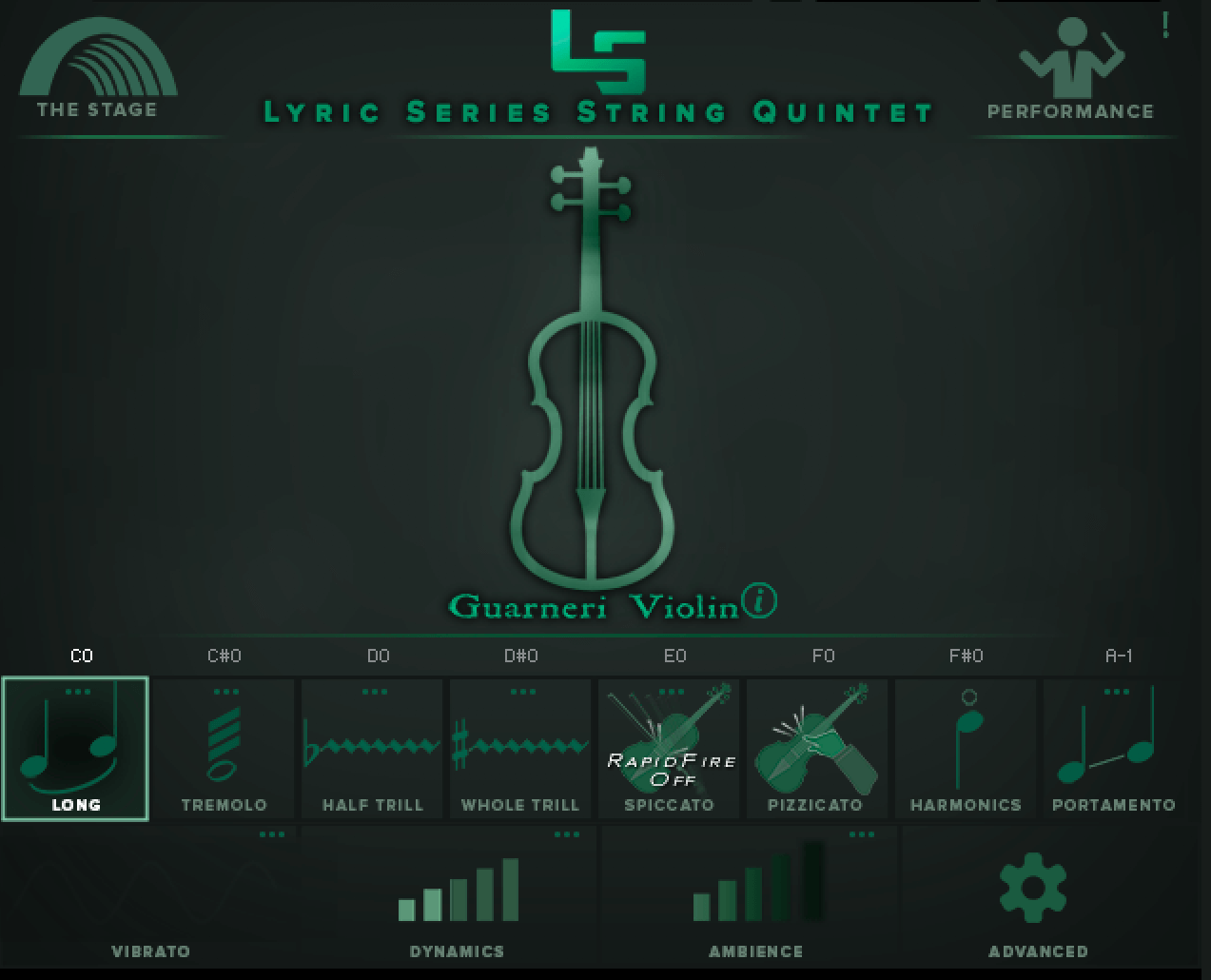
Unique Key Features:
- Unrivaled Vibrato Control
- Intuitive, String-Oriented Legato Transitions
- RapidFire Spiccato for Fast, Aggressive Phrases
- Easy-to-Learn Interface
- Multis for Small String Ensemble Work
- See the USER MANUAL
Download Lyric Strings Quintet instruments update HERE.
- A working knowledge of how to use Kontakt.
- ~2GB disk space
- FULL version of Kontakt 6.6.1 or newer (not the "player" version).
- Download links expire in 6 months.
INSTALLATION
- Extract the .zip file.
- From within Kontakt, open any .nki (or .nkm file if provided) file.
CLICK BELOW FOR LIBRARY TURORIALS
- Concert Brass 2
- Concert Brass Legacy
- Chamber Strings Adaptive
- Concert Strings Adaptive
- Concert Strings 2
- Concert Strings 3
- Concert Strings Legacy
- Diamond Symphony Orchestra
- Front Row Violins
- Kinetic Brass Plus
- Kinetic Solo & Chamber Strings
- Kinetic Strings Plus
- Kinetic Woodwinds Plus
- Lyric Strings Quintet
- Spotlight Solo Strings 4D
- Virtuoso Ensembles


